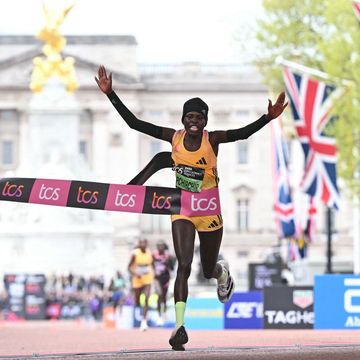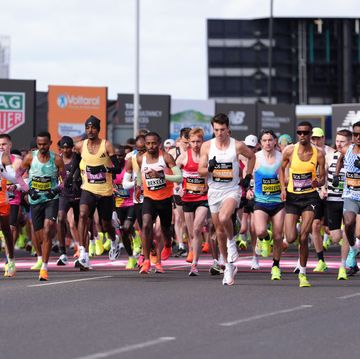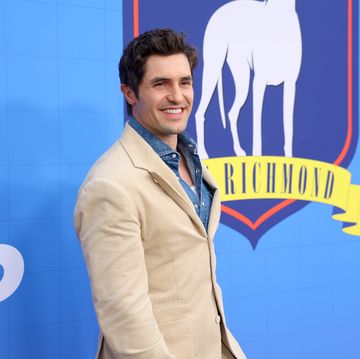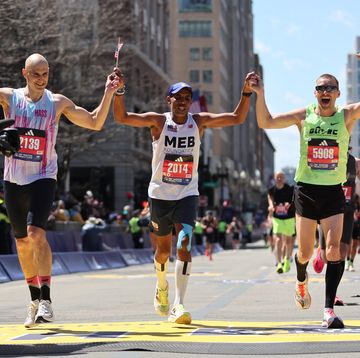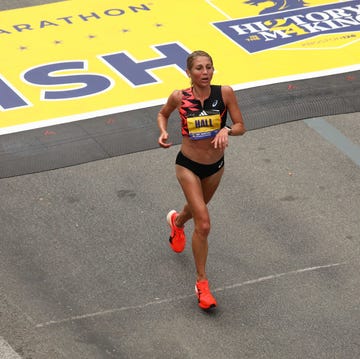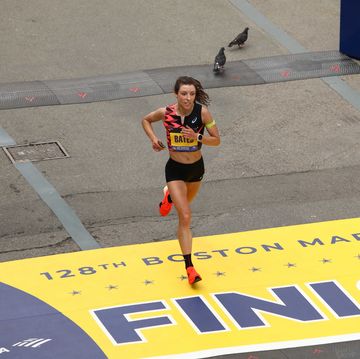On May 6, 1954, the announcer at the Oxford University cinder track in England calmly gave the placings in the one mile race, and then started to announce the winning time, beginning with the word “three...” The small crowd erupted in delirious excitement, the rest of the announcement went unheard, and Roger Bannister became an instant legend as the first man to run the one mile faster than four minutes. His 3:59.4 that evening is often cited as one of the seminal moments in the world of sports. It has become a symbol of human achievement on the same level as the conquest of Mount Everest the previous year (May 29, 1953).
Advertisement - Continue Reading Below Chris Chataway, formerly Oxford students, and Chris Brasher, formerly of Cambridge University, were representing the English Amateur Athletic Association in the annual meet against Oxford, and chose that obscure opportunity for a planned attack on the elusive four-minute “barrier.”
There was urgency. The world had talked of sub-four since the heady days when the “Mile of the Century” races in the 1930s enraptured huge crowds, as Americans Glenn Cunningham and Bill Bonthron, New Zealander Jack Lovelock, and England’s Sydney Wooderson progressively cut the mile and 1500 meter records to 4:06.4 and 3:47.8, respectively. During the war years, Swedes Arne Andersson and Gundar Haegg kept the sub-four passion alive, leaving the mile record at 4:01.4 by Haegg.
Since 1945, that time had never been threatened. Four minutes was regarded as “the impossible barrier,” beyond human reach. But suddenly, in December 1952, the little-known John Landy reignited the flame by running 4:02.1 in the early Australian summer. The next month, Landy stayed under sub-4 pace until the final bend, ending that one on 4:02.8 and leaving the Aussie crowd beating the air in disappointment.
In the northern spring of 1953, the assault began in earnest. Bannister, having missed an Olympic medal in 1952, ran 4:03.6, glimpsed his destiny. Kansas University’s Wes Santee seized the initiative with 4:02.4, Bannister hit back with 4:02.0, and the now-forgotten Sune Karlsson brought Sweden back into the race with a 4:04.4.
The barrier stood. And it survived through another Australian summer, as Landy tried again and again from December 1953 to April 1954. He got down to 4:02.0. He had to do it on grass tracks and in hot, windy conditions. In his last attempt in Australia, he trod on a football stud and ran most of the race with its nails in the sole of his foot. That day, he ran 4:02.6. In the American indoor season, Santee had done exactly that as a relay leg.
That same April, Santee had to run three events for Kansas against University of California at Berkeley. He ran the 880 in 1:51.5, the mile in 4:05.5, and a 440-yard relay leg in 48.0. If Santee had raced only the mile that day, would we have celebrated this 67th Nutrition - Weight Loss?
But it was on May 6, 1954 that the place in history was seized by Bannister. The 25-year-old medical student was a man of detail who had sharpened his spikes on a grindstone that morning in preparation for the coarse cinders of the track; a man of planning, paced for the first two laps by Brasher and for the third lap by Chataway; and a man of suppressed passion, who released his surging sprint at exactly the right moment on the last lap to carry him through the once-impregnable barrier and into immortality.
Best Songs for Sprinting, has been acclaimed as one of the best ever published. Roger was a senior writer for.

Roger Robinson is a highly-regarded writer and historian and author of seven books on running. His recent Other Hearst Subscriptions Advertisement - Continue Reading Below Running Times The first sub-4 minute mile is a symbol of human achievement Runner’s World contributor, admired for his insightful obituaries. A lifetime elite runner, he represented England and New Zealand at the world level, set age-group marathon records in Boston and New York, and now runs top 80-plus times on two knee replacements. He is Emeritus Professor of English at Victoria University of Wellington, New Zealand, and is married to women’s running pioneer Kathrine Switzer.





